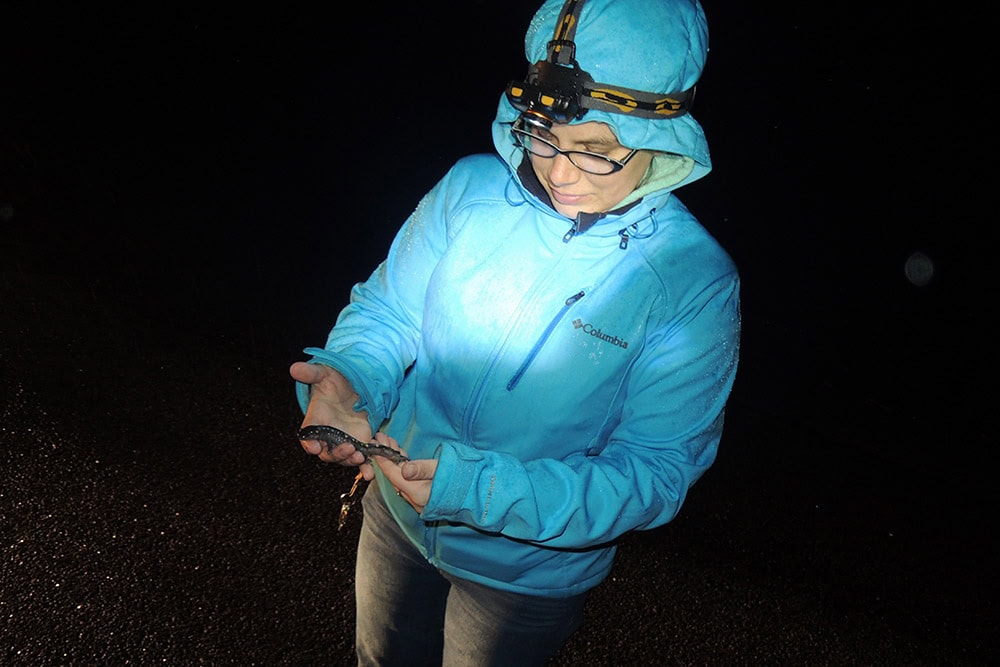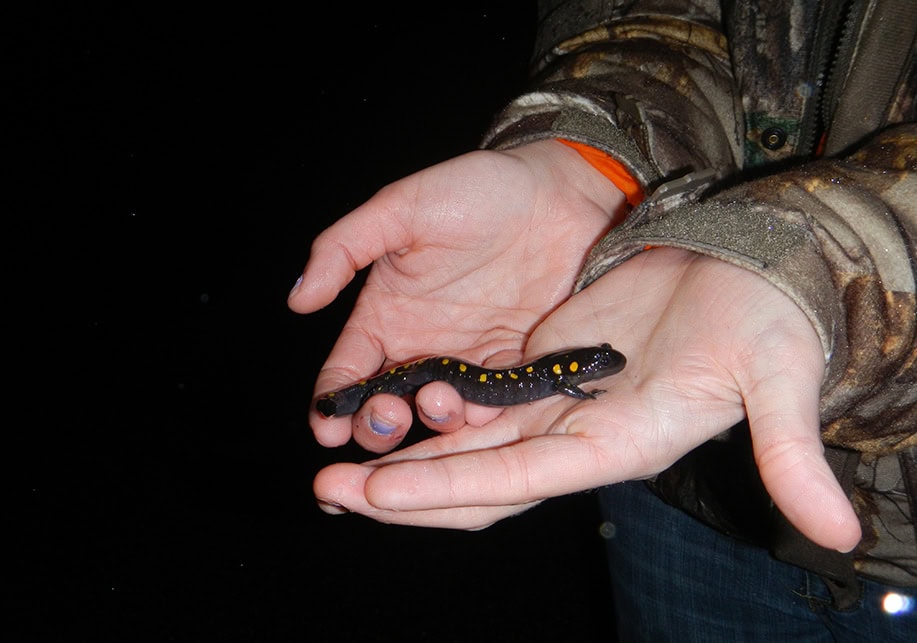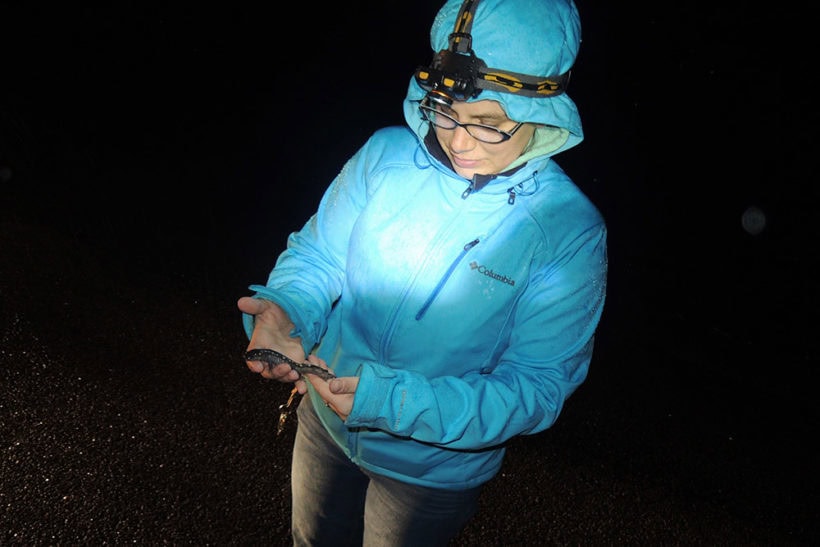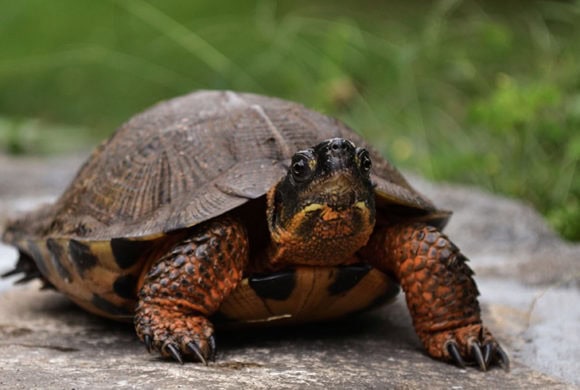The Great Migration Happening in Our Backyards
When we think of migrating animals, we often think of geese flying north to Canada or the monarch butterfly making its way south to Mexico. But the migrations that happen in our own backyards are just as exciting.

In late March and early April, our region’s spotted salamanders and wood frogs will be making a daring dash from their winter hibernation spots to vernal pools (small ephemeral pools that fill in the winter and dry up by summer) where they will breed and lay their eggs.
They typically wait to migrate until late winter/early spring, leaving their hibernation spots on rainy evenings when the air temperature begins to rise above 40. Amphibians live in wet environments; therefore, rain is essential for their migration.
However, these small creatures may have a number of obstacles to overcome before their journey comes to an end.
What makes it such a difficult journey?
Unseasonably warm temperatures may prompt our region’s amphibians to begin migrating earlier than usual. This can become dangerous to their populations if we experience a late freeze. A late freeze could mean death to the early migrants and their eggs, resulting in a smaller population for next year.
Also, habitat loss and fragmentation means that a migrating salamander or frog must sometimes travel up to a quarter mile across roads, driveways, and other man-made obstacles to reach their destination.
These pressures can drive high mortality rates in frogs and salamanders.

Why are amphibians so important to the ecosystem?
Amphibians play an important role on the forest floor, acting as both predator and prey. Also, in every environment there are specific species that are more sensitive to change and for this reason they can be a strong indicator of whether or not the environment is healthy. For forests and wetlands in our region, amphibians are an indicator species.
How can you help amphibians?
While driving on rainy spring nights near woodlands, be cautious and pay attention to the movements of amphibians. Saving just one migrating amphibian could allow hundreds of amphibians to be hatched in the coming months.
You can become more involved with helping amphibians cross the road by joining the New York State DEC in their road crossings project. Click here to learn more about how you can volunteer to be an amphibian crossing guard.
Upcoming Program
Animal Adventures: Remarkable Reptiles
April 7, 11am-12pm
Reptiles amaze us with their remarkable adaptations and are some of the most highly specialized animals and unique animals in the world. Visit with some native and exotic species here at Teatown.
For families with children 5 years old and up.



